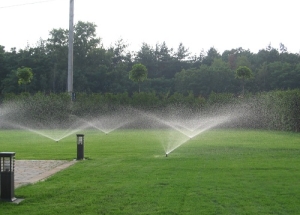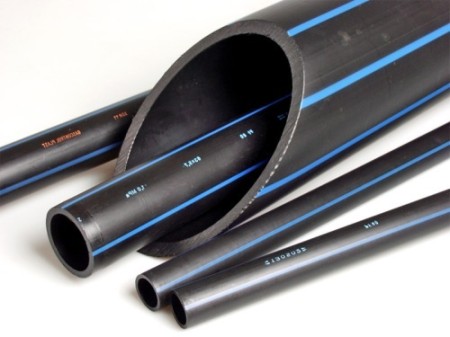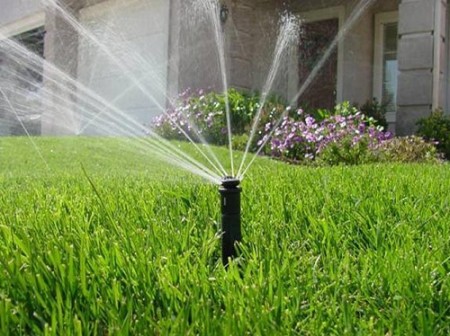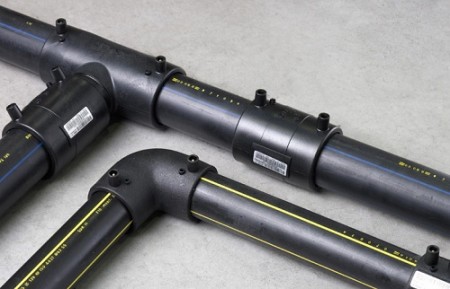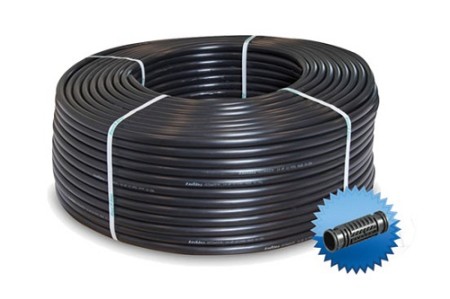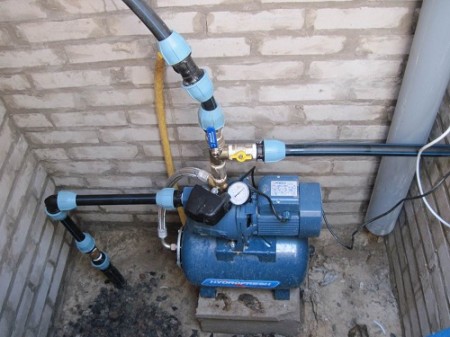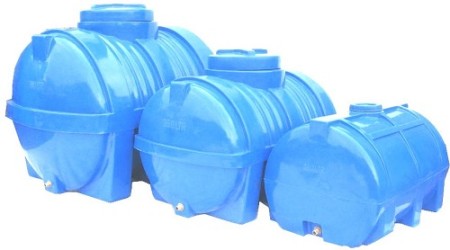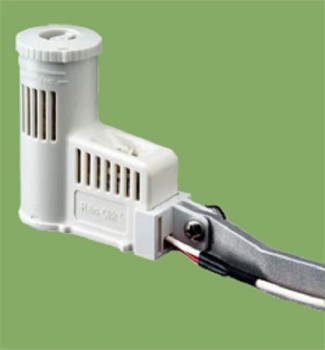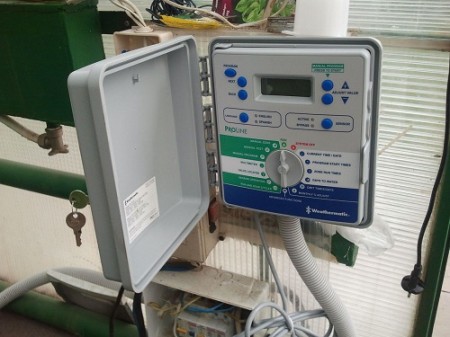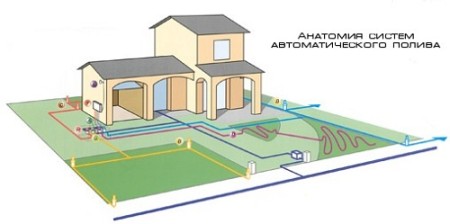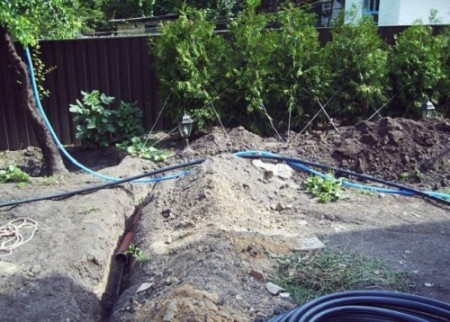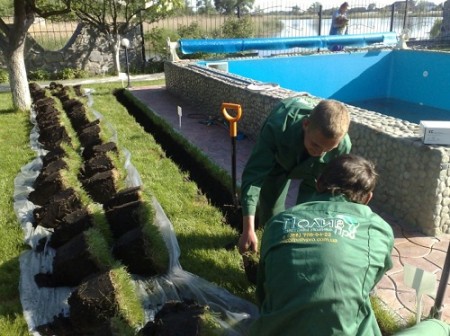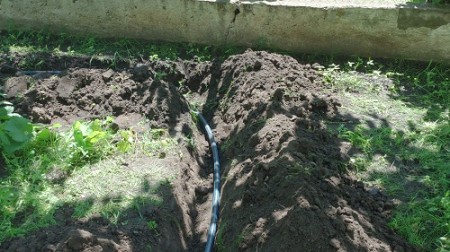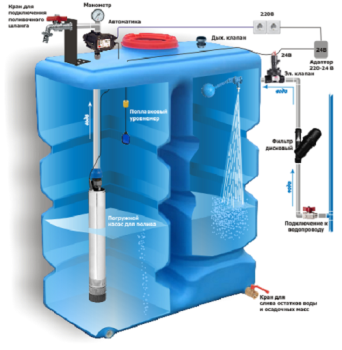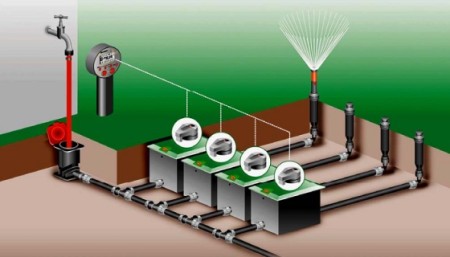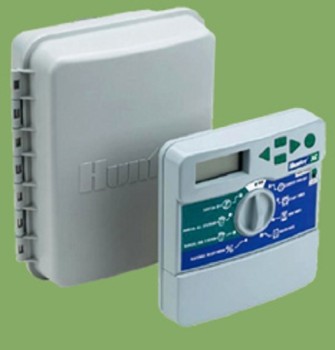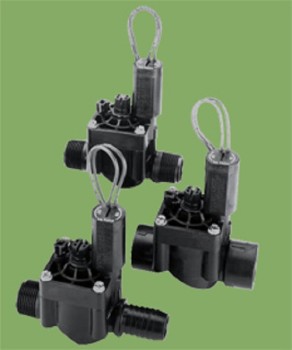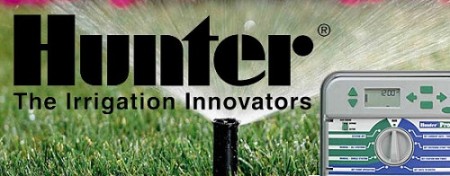If you decide to create a beautiful green lawn, after making the planning and seeding of the plot on the site, it is necessary to cover it with cover material Agrosad and arrange watering. Emerald fresh grass on the lawn and beautiful flowers need constant care. Caring and watering a new lawn, watching as it grows, is gaining strength, certainly, an exciting lesson. But, alas, over time regular watering turns into a boring, routine occupation. In this case, the owners of the lawn will benefit from the system of automatic lawn watering. You can buy a ready system, or you can mount the device for irrigation yourself. How to do this, what factors to take into account what will be needed in the course of the work - we'll talk about this in this article.
Content
What is necessary for the automatic watering system
The system of automatic irrigation with our own hands, in principle, can be assembled and it will work no worse than the factory one, but there are a lot of nuances in the design process that must be taken into account. Therefore, it is recommended to entrust the creation of an individual project to a specialist. If there is no such possibility, then at least consult before starting work.
Remember that every mistake made can subsequently turn into serious trouble - you are working with living plants, and excess moisture or its lack will be harmful to them.
For the future automatic irrigation system the following materials will be needed:
- Plastic pipe (HDPE). If the site is small, we buy a pipe with a diameter of up to 32 mm, for sections of more than 20 hectares a pipe from 25 to 40 mm is needed.
- Sprinklers.
- Connectors.
- Drip hoses.
- Pump.
- Water tank.
- Humidity sensors for soil and rain.
- Control computer.
This is the main list, which can be much more - it all depends on the individual project.
Work plan
If you plan to assemble the automatic irrigation system yourself, you can not do without a detailed plan. It should include a detailed scheme of the site with the exact location of all sprinklers and the direction of the waterways. If you can not ask for help from a specialist, you'll have to draw a plan yourself. It should be marked all the buildings on the site, all the paths and planting of plants. Very well, if the work will be carried out on a new site, then you do not have to spoil the lawn. But if you need to build a highway over the already finished lawn, then the main thing is to damage the grass cover as little as possible.
Before you start excavation work, mark the area according to the plan-scheme. The easiest way to do this is with a cord that will be clearly visible. Draw the cord between the pegs, it should not sag. Digging is necessary on one side of the lace to a depth of about 25 cm. If on the way there are obstacles that can not be removed - large stones, tree roots, you will have to correct the direction.
Earthwork and installation of automatic irrigation system
Very often automatic lawn irrigation systems have to be laid on the already prepared grass cover. In this case, it is necessary to protect the grass cover from damage. Dug up the earth, if it will lie on the grass for a long time, will lead to the death of the lawn. This can be done with the help of a reliable, but somewhat laborious method. The essence of it is as follows: along the marking with a titanium shovel, we make incisions of the turf on the two sides to the required depth. Titanium shovel in this case is good in that it almost does not stick to the soil, even very wet. After this, pull out the turf cubes with the ground using a conventional shovel.
Pipes for the automatic watering system are laid on the previously leveled bottom of the finished trench. Pipes are sold in coils of 50 to 200 meters in length. Before laying them in a trench, the pipes must be spread out on the ground to make them slightly leveled. This will greatly simplify the work. Then, in the places indicated on the diagram, cuts are made on the pipe. Fragments of pipes are connected by means of fittings.
Sprinklers are mounted at the desired points. This takes into account the radius of operation of each element. The main lines are connected to valves and underground hydrant columns. It is recommended to use Gardena hydrants. Columns that have a special key are not only less convenient, but also relatively short-lived.
The reverse side of the highway is output to the tank with the pump. Immediately after this, the removed pieces of turf with the ground are returned back, and the track section is ready. Following the system shown here, you will not cause virtually no damage to your lawn. Extra land can be spread over the surface of the lawn with the help of rakes.
When drawing up a plan, you need to take into account the location of the sprinklers in such a way that there are no unplugged plots left. On the other hand, installing sprinklers too close to plants can damage them
The main pipeline, which supplies water to the distribution valves, must have a larger diameter than the secondary mains that supply water to the sprinklers. The necessary number of sprinklers is calculated based on the total amount of flow of each element and the power of the installed pump. It must be taken into account that the pump capacity must be greater than the expense of all sprinklers in one unit of time. Otherwise, it will not be possible to ensure uniform and regular watering. That is, the first sprinkler from the pump will run at full power, and the latter will produce a thin trickle.
This can be avoided by correctly selecting sprinkler nozzles, that is, to reduce or increase the pressure due to the nozzle, or increase the pump's power.
Transportation of water to the irrigation system
For the accumulation of water intended for irrigation, special plastic containers are used. They can be bought in construction and garden markets, shopping centers, or directly at companies that supply watering equipment. Capacities are sold in blue, less often black or green. Tanks of blue or green color should be wrapped in black film to prevent the flowering of water. Blooming water, due to the formation of algae, can clog the entire system.
Water is supplied to the tank from a domestic water supply system, a well or a well, and from there it is pumped by a pump into the pipeline. The water level in the tank is controlled by the float valve. The valve allows you to pump the required amount of liquid into the tank during irrigation, constantly maintaining the desired level.
The capacity of the tank should correspond to one irrigation cycle of the entire plot plus 15-30% of the reserve in case the irrigation time needs to be increased. So, for a plot of 20 hectare there will be enough capacity of 2 cubic meters. One 150-200 liters of water is usually enough for one irrigation cycle of one zone zone, with a total land area of 20-25 acres. If watered regularly, then lawn grass and plants will suffice this moisture even in a very hot summer, as moisture will persist in the surface layer of the soil. It is recommended to include the irrigation system in the early morning (5-6) and evening (20-21) hours. Each valve should not work more than 10-15 minutes.
Operation and operation of the system
The system of automatic irrigation in the country or in the private plot is operated from spring to autumn at temperatures from +10 to +40 degrees. The pressure in the main line should not exceed 6 atmospheres, and the water temperature should not exceed +32 degrees Celsius.
The system is operated in manual and automatic modes. The manual mode is started when the user turns on the solenoid valves or opens the valves on the water supply lines. If the valves have not been installed, the user himself determines the watering time.
Automatic irrigation is controlled by a program entered into the valve heads using a programmer or remote control computer. It is allowed to start from 4 to 6 waterings per day for each valve. Duration of watering should not exceed 10 hours per program. With regard to the number of valves, it directly depends on the controller model and system configuration, and can reach several tens.
In order for the system to be more convenient to maintain, it is possible to install drain valves on all lines in the lower and upper points. The solenoid valve operates on a 9-volt Krona battery, or 1.5V AA batteries. With a fixed controller, the valves operate on 24V voltage. Each controller has a battery so that all previously recorded data is not lost in the event of an emergency shutdown electricity. The energy of the batteries is quite enough for the entire watering season. At the beginning of each season, all batteries in the system must be replaced.
If desired, the system can be run in fully automatic mode. To do this, you need to install soil moisture sensors and precipitation sensors that connect to the heads of each valve or to the control controller. The sensors take moisture from the soil or the intensity of precipitation. After the sensor receives a signal, the watering program switches off automatically. The program will restart only after the sensor has dried completely.
Equipment that is used in automatic irrigation systems, usually does not require any special knowledge or skills.
There are a list of simple rules that must be observed when operating:
- About once every two weeks, check the water purification filters before the pump and the lines.
- Once a season, replace all batteries on the valves and controller.
- After the end of the watering season, take out the valves from the wells, remove the humidity and precipitation sensors.
- Before leaving the equipment for storage in winter, remove all batteries.
During the operation of the automatic watering system of plants, it is necessary to make sure that the height of the lawn grass is not lower than three centimeters, since sprinklers can be damaged. This is due to the shrinkage of the artificially filled fertile layer, the shrinkage of which can last several seasons.
After the irrigation is completed, the sprinkler bleeds the remaining water through the valve or nozzle. As a result, in some places the soil may sink a little. In this case, a layer of soil around the sprinkler must be renewed. Some suppliers sell irrigation systems that do not discharge water at the end of irrigation, but such equipment is more expensive.
If filters are installed in the sprinklers, periodically check their cleanliness, clean the upper head of the sprinkler from soil particles and grass residues with a soft brush.
Most popular equipment manufacturers
automatic watering system hunter
Manufacturer - USA. The main distinguishing feature of these irrigation systems is full automation. The whole system can be programmed for several days, weeks and even months. It is possible to set the exact watering time, duration and water flow for each cycle. The program can be changed and adjusted manually and via the Internet. All hunter auto-watering systems have weather sensors, and the system does not start in windy and rainy weather.
automatic watering system gardena
The manufacturer is Germany. With the help of these systems it is possible to water the territory of up to 380 sq.m. The system is equipped with retractable turbo-idlers, whose irrigation range can be adjusted. All Gardena systems are equipped with soil moisture sensors and precipitation sensors.
Finally, it should be noted that the independent installation of an automatic irrigation system is not an easy task. The information given here is more general advice than an exact instruction. We hope that after reading, you will correctly assess your knowledge and experience and decide whether it is worth doing watering on your own or turn to professionals.


